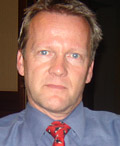This is what Finnish expert Pasi Sahlberg, who has international experience in more than 35 countries in the training of teachers, school administration, and policy consulting in educational reforms, thinks.
“Each educational system has its problems. After visiting Armenian schools and universities, I would separate the old model of instruction as one of the issues of the Armenian educational system,” said Sahlberg, one of the experts invited to participate in the “Education-2015” conference, during a private discussion with “168 Hours”.
According to the chief expert of the education policy of the European Training Fund, this model of instruction no longer supports the securing of the quality of education.
“School principals and teachers must enjoy more independence so that the latter may be able to not only work under the systemized regime, but also apply their own methods,” says Sahlberg, adding that in Armenia the small financial resources impede the fast pace of reforms.
Comparing the Finnish example, where the educational system received qualitative values, Sahlberg notes that like the image of education in Finland of the past 40 years, there is a positive base for reaching great heights in Armenia. It is that the Armenian society is ready to pay large amounts of money for education, independent of the quality. This is already a very good base for bring educational reforms. Recalling Finland in the 60s-70s, Sahlberg was telling that in the early 70s, three of the four quite wealthy Finns had received only the basic nine-year education. Professional and technical education was underdeveloped, and often parents and adolescents considered as these as the final choice, as well as a sign of failing in education.
“The important part of the new vision of education was the accessibility of educational services, regardless of where people lived or their socio-economic status. All Finnish children had to learn in schools with the same plan,” says Sahlberg, adding that education became completely free of charge, including textbooks, exchange rates, everyday nutrition, and health care services. The reformation was productive by the end of the 70s, with the increase of the numbers of people getting accepted to Finnish universities. In Armenia, nobody even thinks about the insertion of a free educational system during reforms. This is sort of an absurd thought for many state officials.
When hearing the phrase “Free education”, for some reason, they remember the reputable Oxford and Cambridge universities, where education is also paid for, yet comparing quality the differences go without saying.
“Quality requires demand”. The expression is absurd in this case. Besides that, the comparisons between the quality and price become absurd when you remember Sorbon University of France, where education is free and words can’t describe the quality.
According to Finnish expert Pasi Sahlberg, Finland and Armenia are somewhat similar to one another in that aspect: neither of the countries have natural resources nor geographical particularities that would create opportunities for economic development and possibilities of growth.
“These kinds of small and comparably poor countries need to use their entire human potential in the construction of a prosperous, competitive, and prosperous state,” he says.
Being certain that the old educational model only hurts progress, the Finnish expert, however, looks at this approach critically, saying that the entire system must change during the process of reform.
“Many things from the old system are important and productive and we must appreciate them. For example, Finland had this problem in the 70s. People were demanding one thing from the system and getting something else. The world is changing, human demands are changing, and it is necessary to fill the old system with norms corresponding to the new human demands,” he says.
One of the other problems facing the Armenian educational system is cooperation and lack of exchange of ideas which, according to the expert, must not be activated only during the conferences organized in the capital city.
“It is necessary to be consistent and not focus only on the capital, rather other provinces and regions, and see how the people there react to the innovations,” he says.
Touching upon the dangers of corruption in the educational system, Sahlberg mentioned that corruption is a serious issue for all of society.
“I can’t believe that corruption can be eliminated from the educational system, but the educational system may do a lot of things to reduce it,” says the Finnish expert, adding: “It’s just that in this case the battle has to be very active.”

